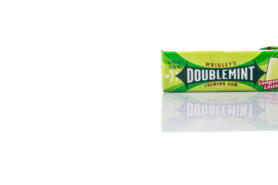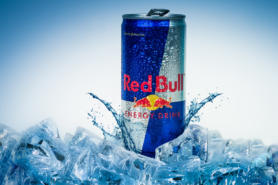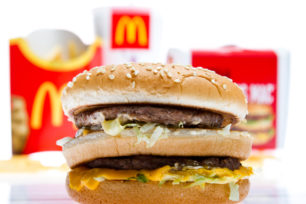The vape escape: how brand owners can fight back
Red Bull, Ferrara Candy Co. and Wrigley are amongst the hundreds of food and drink brand names to have been used by vaping companies. These brand owners are fighting back.

The problem

It would have been difficult to imagine at the turn of the 21st Century that smokers would be swapping Zippos for USB chargers and the taste of tobacco smoke for plumes of sweet-flavoured vapor.
However, vaping in now a huge global phenomena and e-cigarettes a growing industry.
As with many commercial industries enjoying rapid growth, the legislation of e-cigarettes has been left wheezing behind a supply: demand market.
Whilst the UK Government has codified the laws around the health implications and advertising practices in recent times, the genie is now out of the refill bottle.
The problem facing brand owners, especially those in the food and drink industry, is that the rise in e-cigarettes and vaping has led to its brands being misused by third parties looking to sell their vape liquids.

Confectionary giants such as Wrigley and Ferrara have taken legal action in the U.S. over unauthorised use of their instantly recognisable brands DOUBLE MINT, JUICY FRUIT and ATOMIC FIRE BALL, respectively.
American grocer Mott’s has also taken action against the slavish imitation of its name and trade dress for Mott’s 100% Apple Juice By Watt’s 100% Apple E-Juice.
Outside of food and drink, Headspace and Woodstock have also battled it out in the U.S. courts, showing that vape brands are tapping into the experiential as well as pure consumables.
This phenomenon is perhaps unsurprising; brands not only serve as a useful shorthand for what something is, but they also tap into consumer behaviour and emotions, such as nostalgia, choice-empowerment and consumer identity.
The collateral damage caused to brand owners can be huge.
Not only are the brands being parodied and emulated, but they are also being associated with a product that is shrouded in unknowns around the long-term health consequences. Not to mention their appeal to a new generation of otherwise would-be non-smokers.
So what can brand owners do to clamp down on this use?
Trade mark infringement?
The way trade marks for tobacco products and cigarettes are classified could make it tricky for these big brands to build a robust case for trade mark infringement.
Trade marks work by allocating a particular mark (often a word, logo or shape) against a series of goods or services, which are grouped into different classes numbered 1 - 45.
Some classes contain a wide variety of items (e.g. class nine covers everything from “fire extinguishers” through to “computer software applications”) whereas others are much narrower.
Class 34 falls in the latter camp and includes “tobacco” and “cigarettes”. Class 34 is a therefore commonly a lone wolf that is typically used by tobacco companies, rather than brands generally looking to obtain broad defensive protection for their trade mark. This is the class vaping products would fall into.
A consequence of the above is that the vast majority of brand owners of food and drink brands - even those with very comprehensive coverage - will be unlikely to have trade mark protection in Class 34.
Similarly, none of the other trade mark classes are particularly comparable to it. As such, brand owners will struggle to bring a case for trade mark infringement against a vape seller on the basis that there would be a likelihood of confusion by consumers.
Causing damage to a brand

An alternative to claiming a likelihood of confusion is for brand owners to show that a vaping product, without due cause, takes unfair advantage of, or is detrimental to, the distinctive character or reputation of the trade mark.
The first hurdles under this head of claim are to show a reputation and that a link is formed between the brand owner’s trade mark and the vaping product.
To establish a reputation, a brand owner will need to show that its brand had a reputation. To claim reputation the brand needs to be known by a significant part of the public to whom the goods/services covered by the trade mark registration are aimed at e.g. the general public.
A link will be shown where it can be shown that the relevant public makes a connection between the two, even if there is no confusion. Generally speaking it is likely that a well-known brand could make demonstrate this connection.
Making a link is not enough in and of itself to give rise to infringement and a brand owner will also need to show unfair advantage, detriment to reputation or detriment to distinctive character. This is where matters can become trickier.
In vaping cases it is likely that brand owners would wish to argue unfair advantage that they receive by using an established brand’s name or damage to the brand’s reputation based on the potential health and PR consequences that could follow from being associated with vaping.
Brand owners should remember that they will need to show that an unfair advantage has been taken from the perspective of the vaping brand’s consumer.
In contrast, for detriment a brand owner will need to show damage to their brand, which can prove difficult to evidence e.g. a correlation between decreased sales figures for the real brand and increased sales for the vaping brand.
Passing off
Brand owners might also wish to consider a common law action under the tort of “passing off”, which offers a second bite of the cherry where registered trade mark infringement proceedings have failed.
Passing off is an unregistered right in the brand that accrues through use in the course of trading. A brand owner will need to show goodwill, misrepresentation and damage.
Brand owners thinking about bringing a passing off action against vaping products should give careful to consideration to correctly identify the relevant goodwill that is being claimed.
An assessment as to whether, on the facts, there is an actionable misrepresentation should also be given careful consideration. For example, vape packaging may call to mind the packaging of the brand owner’s product, but consumers might arguably be aware that they were buying an unofficial product.
Brand owners more likely to succeed here are those that a well-known for exploiting their rights via third party commercial tie-ins, such that consumers would think that the vape brand had likely taken a licence from the brand owner to use its brand.
Some solutions for brand owners

To date, when compared with litigation elsewhere, brand owners have been less proactive in pursuing cases in the UK through to a judgment.
However, cases such as Red Bull’s successful claim against www.thevapourplanet.co.uk and its director in the UK’s Intellectual Property Enterprise Court (IPEC) for an ordering prohibiting the sale of vape products that infringe Red Bull’s rights (see here) should provide encouragement to brand owners concerned with UK-based infringement.
There are also a number of practical measure that brand owners should consider along the way. These include Trading Standards, IPEC and watching services.
All in all, whilst there is the potential for e-cigarettes and vaping products to seem like the Wild West, these practices can be combated via a series of sensible proactive legal steps and practical reactive measure.
Richard Ferguson is a Chartered Trade Mark Attorney at Stobbs IP
Chartered Trade Mark Attorneys are best placed to advise on any of the issues mentioned in this blog.
More blogs
How McDonald’s lost its Big Mac trade mark
How did Irish burger chain Supermac’s manage to get the Big Mac trade mark cancelled across the EU? The answer lies in the lack of evidence presented by McDonald’s as Daniel Bailey explains.
Apprentice final - a trade mark view
What can we learn from the trade marks filed by this year’s Apprentice finalists Camilla and Sian? Chartered Trade Mark Attorney Richard Ferguson investigates.
Five misconceptions new businesses owners should know about
You have registered your name at companies house, are you protected from someone copying it? The answer may surprise you.





